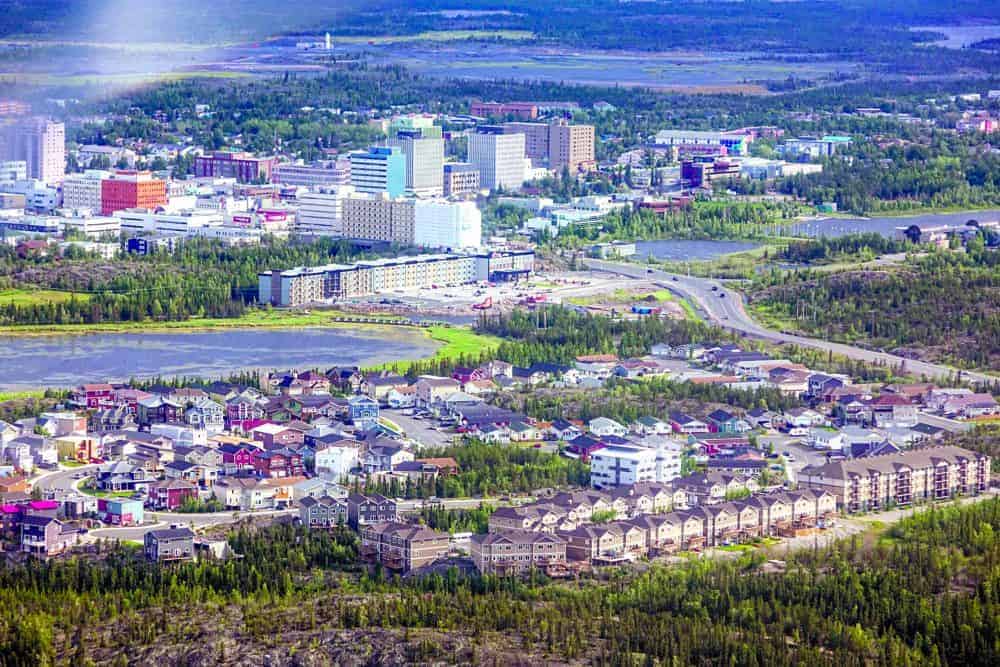If you're a Yellowknifer you can be forgiven for thinking the cost of living is spiralling out of control.
In fact, there is a Facebook group dedicated to that very premise, “Yellowknife's cost of living is out of control!” It was born about eight years ago, primarily in response to skyrocketing power rates but also a host of other seemingly inexorable factors, such as high airfares, ballooning housing costs and crushing grocery bills.

Yellowknife is shown from the air Friday evening. Niven Lake is in the foreground, with the Explorer Hotel's addition seen wrapped in white at the centre of the photo.
Well, is it? Is Yellowknife's cost of living out of control? A recent report by the NWT Bureau of Statistics would suggest there is plenty of merit to that claim. Its latest Consumer Price Index survey found overall costs in Yellowknife had jumped 2.5 per cent from November 2017 – the highest increase among the three northern capitals and 0.7 higher than the national average.
However, while Yellowknife consistently scores as one of the most expensive cities in Canada that's only part of the story. According to the same bureau, household expenses in Yellowknife rose by 13.7 between 2003 and 2015 – from $91,176 per year to $125,783 -- but so did incomes. The average income in 2003 was $50,345. In 2015, it was $73,500, so while costs have steadily climbed over the years, salaries have kept pace.
And as for poverty indicators, not much has changed there either. The percentage of tax filers earning under $30,000 a year marginally increased between 2003 and 2015 – from 10.1 per cent to 10.6 per cent.
Well, this should be good news, right? Yes, Yellowknife is expensive to live in but it's no Toronto or Vancouver, where big ticket items such as buying a home, are truly out of reach for many people.
The problem for Yellowknife, however, is that people aren't lining up to move here. The population has remained stagnant for years. Slow growth and a lack of economic diversity can spell trouble in an economic downturn and by all accounts, that's where the city is heading in the next several years when the diamond mines begin to close.
And Yellowknife could face even more trouble should say, the diplomatic dispute with China escalates, and the spigot of Chinese tourists coming to the city for the Northern lights suddenly shuts off.
Our Wednesday editorial noted how Yellowknife is a resilient city that has weathered many economic storms. This is true but that doesn't mean we should be resting on our laurels in the face of pending trouble.
Let's face it, the take home pay may be good – particularly if one has a professional background – but there is a perception that Yellowknife is a difficult place to live. The long winters don't help, nor do the insane power and heating bills, which ARE among the highest in the country.
We could use some more incentives to make Yellowknife a more attractive place to live.
The territorial government had a great one at the start of the 18th Legislative Assembly – universal daycare – but the GNWT quietly let the expected $20-million program slide.
It's too bad because residents would probably be buoyed by some bold objectives. Right now, we're facing an uncertain and expensive future with no guarantee that the money will keep flowing in.